Last Updated on January 5, 2024 by Soumya
Portugal is rich in history and culture. If you are a culture addict like me and are looking for the best places to visit in Portugal, then you have come to the right place.
Because I have just the perfect combination for you. An enduring mix of Portuguese heritage and history.
We spent 10 days in Portugal recently. And I made sure we covered many cultural hot spots in the country. We had just enough time to scratch the surface of each of these beautiful places in Portugal.
But I now know that these are the places every heritage lover should have on their Portugal bucket list.
Plus, I spoke to some seasoned travelers (Portugal and UNESCO site experts) about their favorite heritage sites in Portugal. And added their recommendations too. Just for you! This resulted in an envious list of 17 incredible heritage places to visit in Portugal.
I have divided the sites by regions so that it is easy for you to plan your Portugal itinerary. We start with Southern Portugal, go up to Central, and end our heritage trip in Northern Portugal. If you arrive in Lisbon, this is the best way to do it. If you arrive in Porto, you can simply reverse the order.
Busy now? Pin our post and read it later.

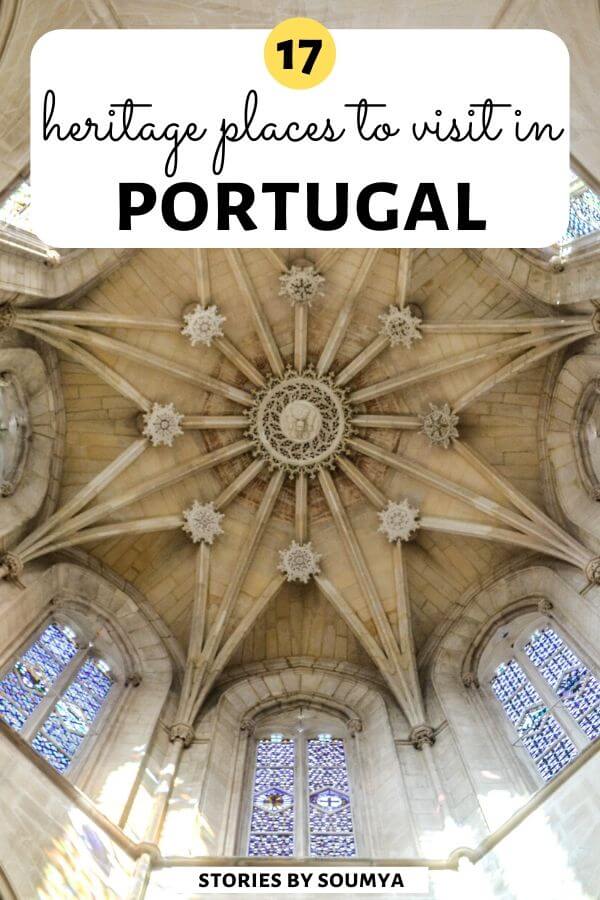
Please note: This post may contain affiliate links which means I may earn a commission if you make a purchase by clicking a link on this post. This will be at no additional cost to you. Affiliate links help me keep this website up and running. Thanks for your support!
Best Heritage Places to visit in South Portugal
1. Sintra – For Stunning Palaces & Castles
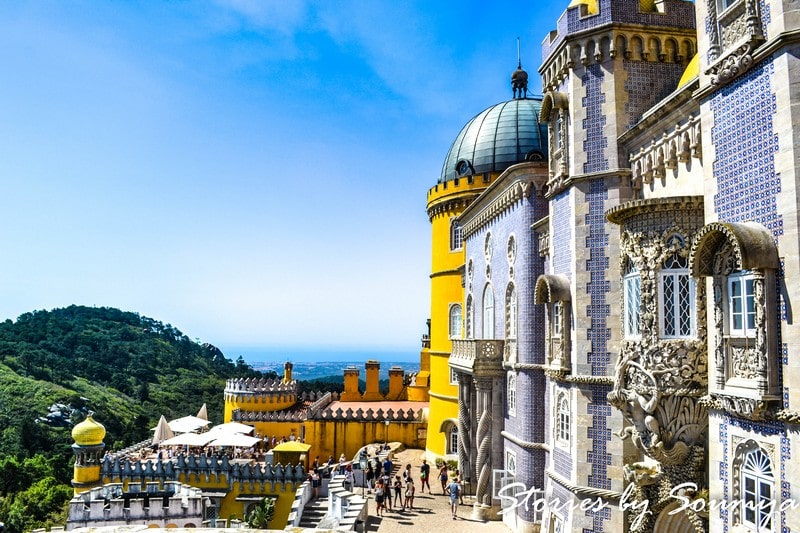
Sintra is one of my favorite places to visit in Portugal. With its eccentric palaces and castles, thick woods, pretty gardens, and unique desserts, Sintra can enthrall travelers of all kinds.
The Romanticist Pena Palace is the biggest draw for tourists in Sintra. You surely cannot miss out on the vibrant yellows and reds here.
And then there is the country house of Quinta da Regaleira. With its mysterious initiation wells and enigmatic architecture, the Quinta is an absolute must-visit when in Sintra.
You can easily do a day trip to Sintra from Lisbon.
The best way to get there is to take a train from Lisbon to Sintra. And then take buses within and around the city. It helps you avoid the narrow roads and single lanes of hilly Sintra. Once done with all the palaces and castles here, do not forget to head to Casa Piriquita for some delicious Portuguese desserts. Especially, their Travesseiros and Queijadas! Yum!
You can easily club Sintra with a trip to Cabo da Roca (the westernmost point of mainland Europe) and Cascais on the Portuguese Riviera.
Do it on your own by referring to our Train Guide for Lisbon to Sintra. Or do a highly-recommended guided tour like this one which has got rave reviews.
Recommended: 7 Magical castles of Sintra that you cannot miss!
2. Lisbon – Not just the capital city of Portugal
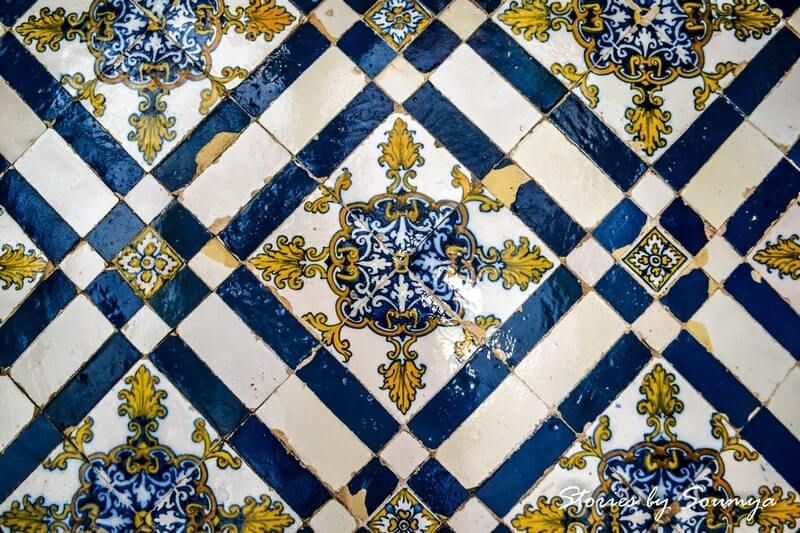
When in Portugal, we cannot surely forget Lisbon. Strategically placed at the mouth of River Tagus, Lisbon functioned as the connector between Europe and the rest of the world. Lisbon saw periods of great prosperity in the 15th and 16th centuries as well as a devastating earthquake in 1755.
Today, you can go, check out the Commercial Square in Lisbon which was once the hub of all economic activity. Elegant buildings flank it on three sides while the Tagus quietly flows down the fourth.
You may want to do this highly-rated guided cruise of River Tagus on a traditional boat if you are keen to learn more about the historical center.
Or head to picturesque Alfama filled with quaint shops and cobblestone streets. Also, take a tour of St. George’s Castle which has been used by multiple empires. The Romans, the Visigoths, the Moors, and the Portuguese Empire!
Also, see a bit of offbeat Lisbon – the National Tile Museum and the Aguas Livre Aqueduct. Nothing can enthrall a history lover more than offbeat historical gems.
See Also: A short 2-day Lisbon itinerary for those strapped for time.
3. Belem – Heralding Portugal’s maritime heritage
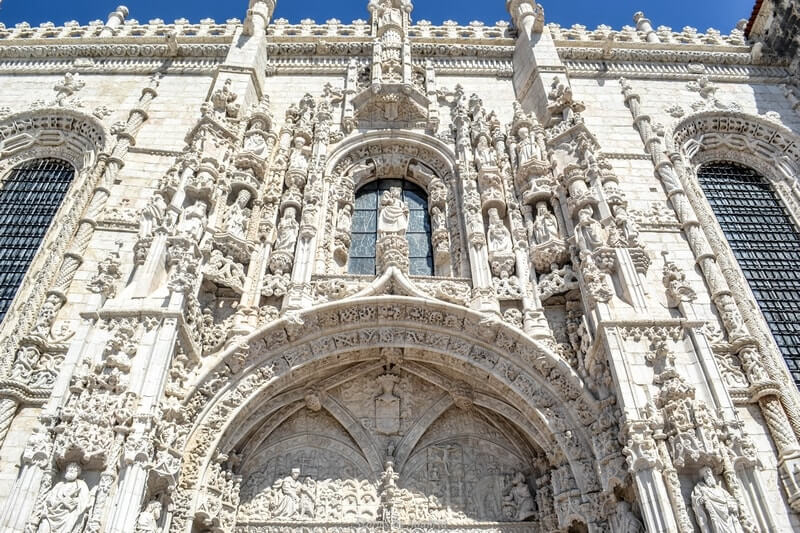
Even though Belem is an extended part of Lisbon, I would like to include it as a separate point here. That is because there is just so much to do in Belem. You can easily spend more than a day here and still not see it all.
Belem is the location of many iconic Portuguese monuments. That is why it is an important pit stop for all history and culture lovers. Portugal’s longstanding seafaring history took birth in Belem. Portuguese discovered naval routes to Africa, Asia, and South America. Riches flowed in. And attractive buildings were commissioned.
If you wish to catch a glimpse of Portugal’s rich maritime heritage, you have to see the Belem monuments. The Belem Tower and the Jerónimos Monastery are two of the most popular ones. Both are UNESCO sites and inextricably linked to Portugal’s Age of Discoveries. Further, Belem is also home to Pasteis de Belem, the iconic Portuguese dessert. Offbeat lovers, don’t miss out on the National Coach Museum filled with opulent carriages from a bygone era.
4. Evora – A strategic Roman town
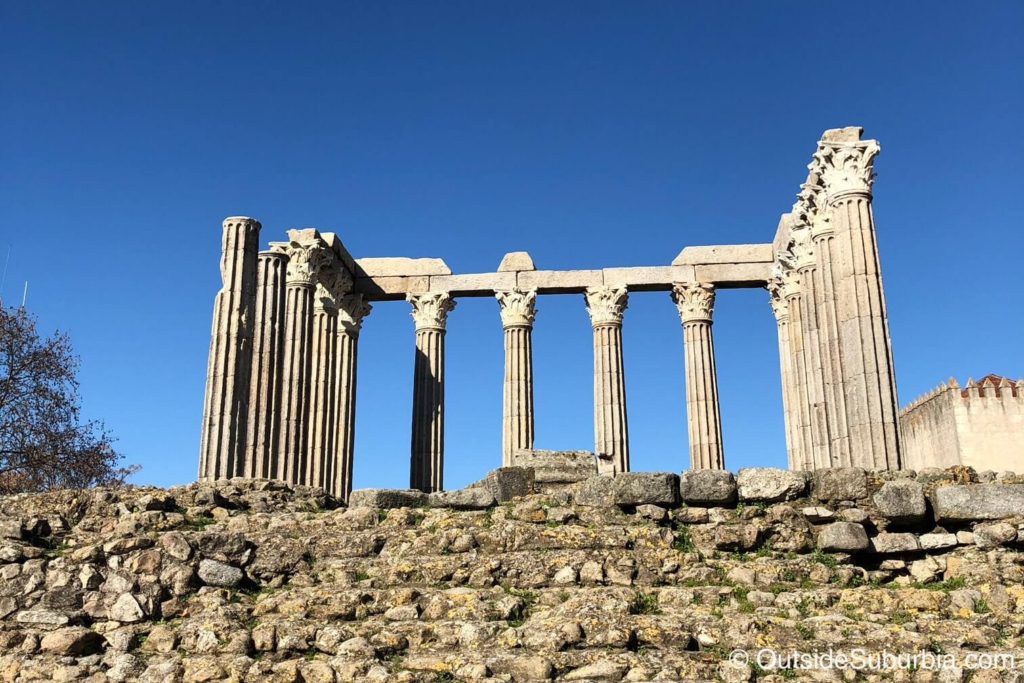
Picture Credits: Priya Vin from Outside Suburbia
Recommended by Priya Vin from Outside Suburbia
The historic center of the Évora, Portugal with its defensive wall dating from the Roman, Moorish periods and whitewashed houses adorned with bright yellow dashes and azulejos (glazed tiles typical of Portugal), was designated a UNESCO World Heritage site in 1986. Évora was an important Roman town because of its location on a trade route to Rome. From the eighth to the 12th century, the Moors ruled Évora and during its Renaissance glory years, Évora was favored by Portuguese kings.
Today it’s a popular place to visit in Portugal.
While driving into Évora it is hard to miss the massive Aqueduct! The aqueduct provided clean drinking water to Evora by connecting the city to the nearest flowing river. That helped the water flow into the Praça do Giraldo, the main plaza of Evora.
Once you reach the city center of Évora 14 Corinthian columns loom above a granite block which many refer to as the Temple of Diana. Historians say that there is no clear evidence of any association of the Roman temple with the Roman goddess of the hunt. But the associations stem from a legend created in the 17th century by the Portuguese priest, Father Manuel Fialho.
Don’t miss the Chapel of Bones, an ossuary built with the remains of bones of 1,245 monks. It is located inside the Church of St. Francis. Another place to visit is The Sé Cathedral, dedicated to the Virgin Mary. The views from the bell tower are worth the climb up.
5. Elvas – The largest bulwarked dry-ditch fortification in the world
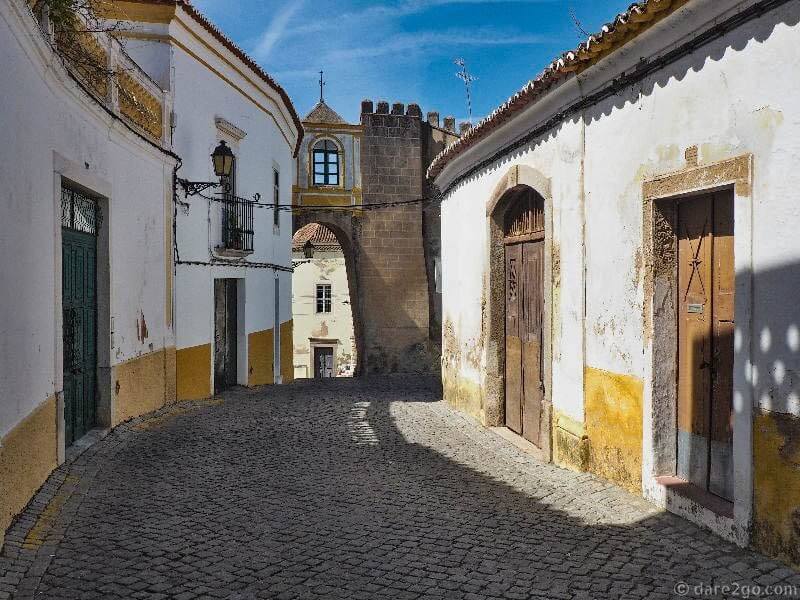
Recommended by Juergen Klein from dare 2 go
The World Heritage listing for Elvas is foremost for its fortifications, which were completed in the 17th to 19th centuries. But the town dates back to the Celts. Thus, you will find many fascinating layers of history in the old town center. Elvas is characterized by narrow cobbled streets and small white-washed houses, accentuated with mustard-colored windows and door frames.
The town developed from the top down.
The old castle, on top of the mountain, goes back to Moorish times. It’s a comparatively small fort with an amazing vista across the town and to the outlying, newer fortifications. The lanes around it are the narrowest in Elvas – not even wide enough to squeeze a car through.
Wandering down from here, you will come past several historic churches, built from natural stone. Picturesque sights include the old Pillory (flogging post) in front of the Arch of Dr. Santa Clara. The main square is dominated by the 16th-century Cathedral and several Moorish inspired buildings.
Further downhill, past the Fountain de São Lourenço and the small church of the same name, you reach the old barracks, now a military museum. From the walls here you get a great view of the multi-layered star-shaped bulwark fortifications that earned Elvas its World Heritage listing.
Other sights you shouldn’t miss in Elvas: the 7-kilometer long Amoreira Aqueduct, the small Conde de Lippe Fort on the next hill, and the Baroque church Senhor Jesus da Piedade (tip: the shrine inside is intriguing!). Elvas is located in the far east of Alentejo. It’s a little over 80 kilometers east of Evora and the nearby Ducal Palace of Vila Viçosa, currently on the UNESCO Tentative List.
Best Places to visit in Central Portugal
6. Coimbra – One of the oldest universities in the world
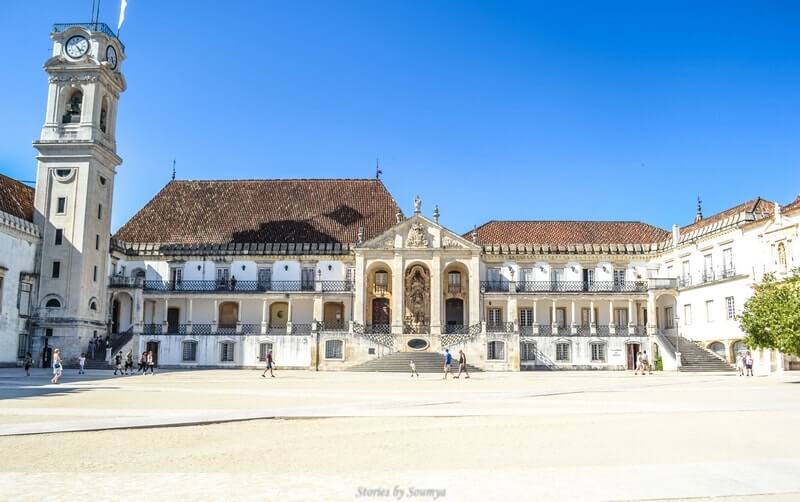
Coimbra, a charming riverside city in Central Portugal, is home to one of the oldest universities in Europe. The iconic University of Coimbra. Also a UNESCO world heritage site.
The university was founded in 1290 on the top of a hill overlooking the city. It has some of the most remarkable, richly-crafted buildings ever found within the premises of a university. Take the case of the opulently-carved Baroque Joanine Library. Yeah, the one that inspired the towering library shelves in Harry Potter. Or the Royal Palace of Alcáçova which has been home to the university since 1537. Or the Santa Cruz monastery with its interesting assortment of azulejos. The University of Coimbra will spoil you for choices.
If you are really keen, you can also do a highly-rated walking tour of the university with guides who studied here. Click here to book your walking tour.
If you are looking to do something after visiting the famous university, do check out our one-day itinerary for Coimbra. Apart from tonnes of historical and cultural things to do here, there is an interesting bit that will appeal to families traveling to Portugal with small kids.
See Also: What to do in Coimbra in a day?
7. Conímbriga – The best place in Portugal for Roman mosaics
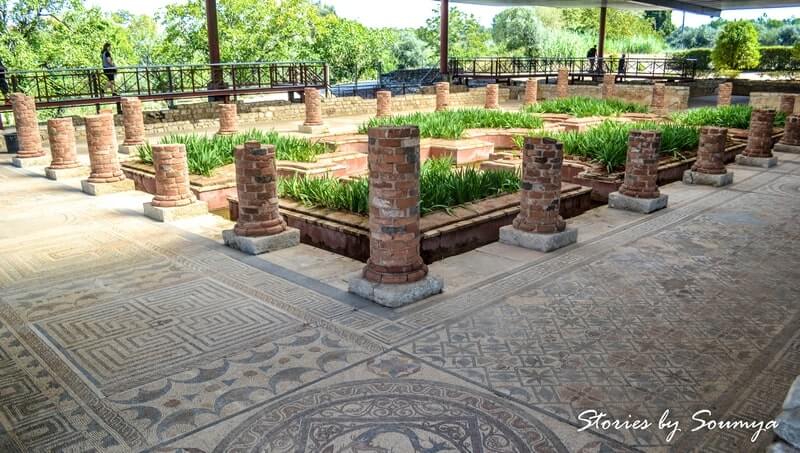
Craving for something Roman in Portugal? Head to Conímbriga, one of the largest Roman settlements in Portugal and outside of Italy. One of the oldest towns in Portugal, Conímbriga has been inhabited since the 7th century BC. Romans arrived here in the 1st century AD. And it fell into disrepair after being attacked by German tribes in the 5th century.
One of the best reasons to visit the Roman ruins of Conímbriga is to see the exquisite floor mosaics housed here. Almost all the villas were adorned with colorful mosaic floors. The ones at the House of Fountains and the House of Cantaber are magnificent. They illustrate life in ancient times through images of humans, plants, birds, and animals. Several decorative frames, patterns, and colors are used to make them more attractive.
Conímbriga is easily done as a half-day trip from the university town of Coimbra. You can take a car or a Transdev bus. We took the bus. It was easy and cheap.
8. Fatima – One of the most sacred places for Catholics
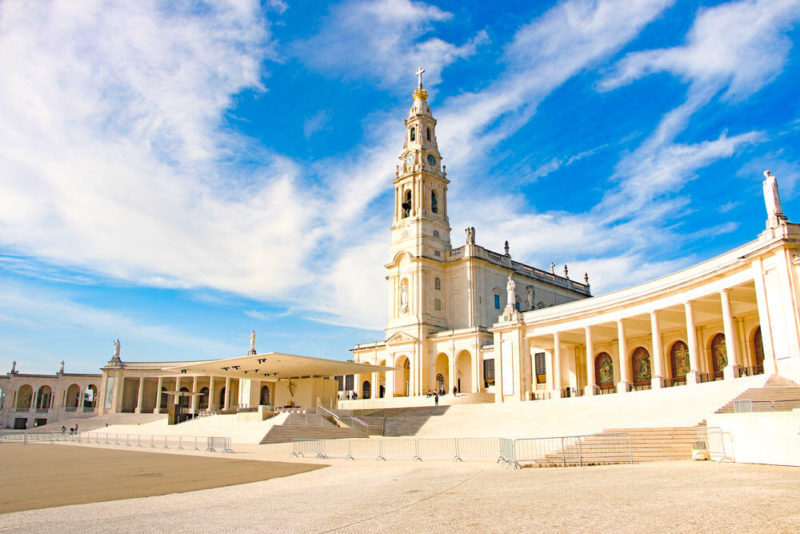
Recommended by Campbell & Alya from Stingy Nomads
Fatima, a small town in Portugal, is one of the sacred places in Europe for Catholics. Unlike other famous Christian holy sites such as Rome or Santiago de Compostela, Fatima is a relatively new place. The history of the sanctuary of Our Lady of Fatima goes back to the beginning of the 20th century.
In 1917 three local shepherd children experienced the so-called Marian apparition. The children reported a supernatural appearance of the Virgin Mary in front of them at the Cova de Iria in the parish of Fatima. It took 13 years for the Catholic Church to recognize the event as “worthy of belief”. In 1930 the Church granted a papal indulgence to the pilgrims heading to Fatima, the same indulgence that is granted to the pilgrims to Rome or Santiago de Compostela. The construction of the Sanctuary of Fatima started in 1928 and finished in 1954. The complex is beautiful and very different from other religious heritage sights in Europe.
The Sanctuary is a great example of modern religious architecture.
We visited Fatima as a part of our pilgrimage from Lisbon to Santiago de Compostela that includes the Camino de Fatima.
Arriving in Fatima after one week of walking through Portugal was an amazing feeling. The pilgrimage ends at the square in front of the sanctuary.
We were impressed by the greatness of the complex and the number of people that come here every day.
As pilgrims, we could stay at the Albergue de pilgrims Sao Bento da Labre for a couple of days before continuing our pilgrimage to Santiago de Compostela.
The Camino de Fatima can be done either way from Lisbon, Porto, or any other town and city in Portugal.
9. The Convent of Christ Tomar
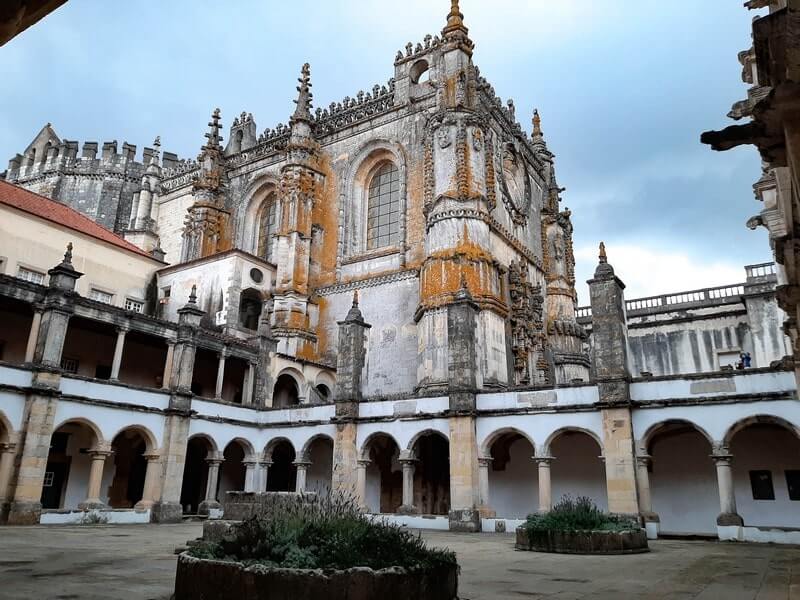
Recommended by Corina from Another Milestone
The small town of Tomar in Portugal is known as the host of a beautiful UNESCO Heritage site: Convent of Christ. Built-in the 12th century by the Order of the Templars, the Convent is surrounded by the walls of the Castle of Tomar. After you step inside, before reaching the Convent’s entrance, you can walk on the walls and admire the city from above. Or you can explore the beautiful garden with lemon trees.
Inside the Convent, you can see the style of different periods since it took almost 5 centuries to be finished. One by one you can visit the interior courts, the one with lemon trees and another with a beautiful fountain, the 12th-century rotunda, Oratory of the Templars and explore the different chambers. The convent is a real labyrinth with stairs going up and down, with rooms very well-preserved on one side and with ruins on the other.
You can see also the kitchen, the old chapel, and the stables. Portuguese blue tiles decorate several interiors. The symbol of the Templers Order, the famous red cross, appears in several rooms, a testimony of their presence here. You will need at least one hour to visit the whole convent. And after you finish, you can put on your list the other 2 monasteries UNESCO heritage sites near this one: Batalha monastery and Alcobaca monastery. We talk about them below.
10. The Monastery of Batalha
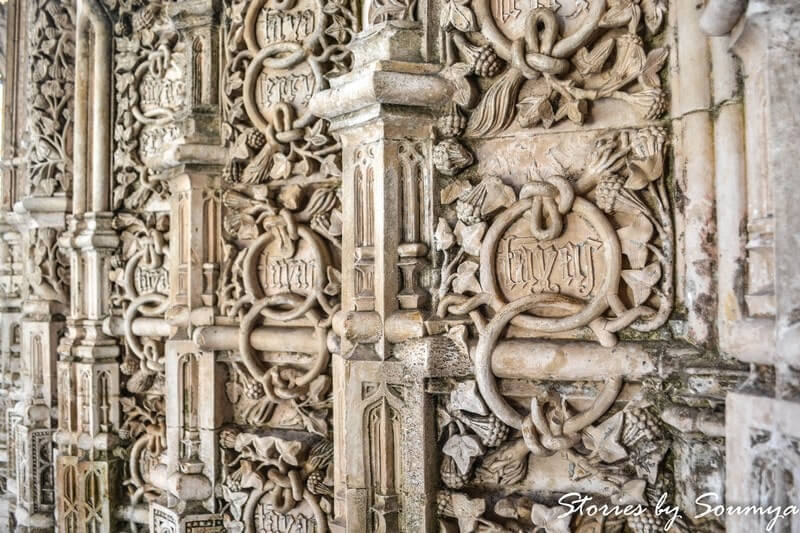
The Batalha Monastery is an impressive religious monument that dominates the skyline of the Batalha town in the Leiria district. It is a heady mix of Gothic architecture and Manueline art. And stands apart from monasteries across the world. That is why it is such a unique place to visit in Central Portugal.
Mosteiro da Batalha was built in the 16th century to commemorate the 1385 Battle of Aljubarrota. It took several years to build – almost two centuries. And is often viewed as the place where all the creativity of the monarchy came to use. UNESCO refers to the monastery as an absolute masterpiece of Gothic art.
Apart from being the burial ground of many Portuguese kings, the monastery is also the final resting place of Henry the Navigator. You can visit the main church for free. But you need to pay to visit the cloisters which are the prettiest part. The detailing on the stone is exquisite. Plus, this was one of the buildings that used stained glass in Portugal for the first time. The Unfinished Chapel that you will come to at the end of your tour is an added attraction. It has no roof but beautiful Manueline carvings.
11. Alcobaça – An underrated historical place to visit in Portugal
Alcobaça is an attractive town in Central Portugal. It is home to the Alcobaça Monastery, yet another UNESCO World Heritage Site. Yeah, Portugal has so many of them!
But the Alcobaça Monastery is special. It was the first-ever Gothic building in Portugal. And today it is home to the graves of King Pedro I and his mistress Ines de Castro – the casualties of a fatal love story. Their tombs are magnificent. Elaborate carvings dot each and every inch of these tombs. Don’t miss the panel showing the Last Judgement on Ines’ tomb. It is absolutely magnificent.
The Monastery has seen a succession of art styles over its period of existence. It began as a Gothic church. Manueline components were later added to it followed by Baroque sculptures and altarpieces. Today, it is an attractive piece of art and one of the most iconic places to visit in Portugal.
12. Obidos – The most charming place to visit in Portugal
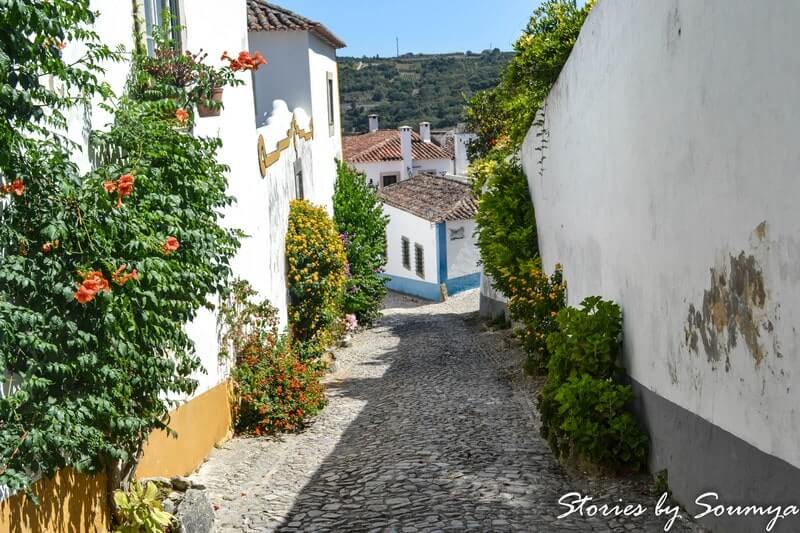
Obidos is a quintessential European walled town located along the Atlantic coast of Central Portugal. It is very different from the other heritage sites in Central Portugal because it is not overwhelmingly Manueline. (Manueline architecture has its own charm though. Don’t you think?)
Obidos is charming, colorful, photogenic, and full of history. Here, you will find flower-laden streets, vibrantly-painted houses, daunting fort walls, and a medieval castle which has now been converted into a castle hotel. You can choose to stay at one of the three suites located in the tower or in 5 smaller rooms. Choose any and feel like royalty in Portugal.
You can book your stay at Pousada Castelo Óbidos here.
The UNESCO has deemed Obidos to be a Creative City of Literature because of its commitment to fostering creativity while preserving heritage at the same time. You can visit here during FOLIO – The International Literary Festival of Óbidos. And make sure you check out the Gothic Saint Peter Church which has now been converted into a library and bookshop.
See Also: 24 Awe-inspiring pictures of Obidos
Best Places to visit in North Portugal
13. Porto – One of the best places in Portugal for Azulejos
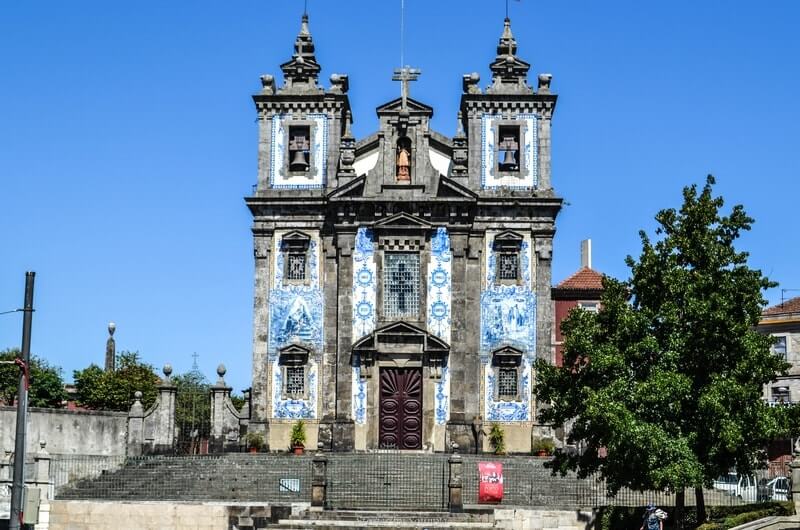
Porto is the second-largest city in Portugal. It has so much to offer to every traveler, let alone the heritage lover and history enthusiast. You can take a leisurely stroll on the Porto Ribeira, get dumbstruck by the grandeur of Palácio da Bolsa, climb the Clérigos Tower for some panoramic views, take a cruise down the River Douro, or simply amble down picturesque alleyways.
If you need some artistic inspiration, then go see the azulejos of Porto. Porto, in my opinion, is the best place to see Portugal’s famous blue tiles or azulejos. Azulejos in Portugal have a long history behind them. You can find them literally everywhere in Porto. On church facades. Along the walls of houses lining narrow streets. Even at the main train station. Some of these are Top Instagram sensations. So, if you are looking for those enviable pictures against pretty walls, head straight to Porto. And if you are looking for a guided tour, then this highly-rated city tour of Porto does a pretty good job at showing you the best tiles and murals.
Porto has the famous Livraria Lello, the famous bookstore that inspired JK Rowling. If you are a Harry Potter fan, you would not want to miss that. I suggest you take a Harry Potter Inspiration tour as well if you wish to learn more.
Click here to book your Harry Potter Inspiration Tour.
See Also: Top 17 things to do in Porto
14. Braga – Ancient and Charming
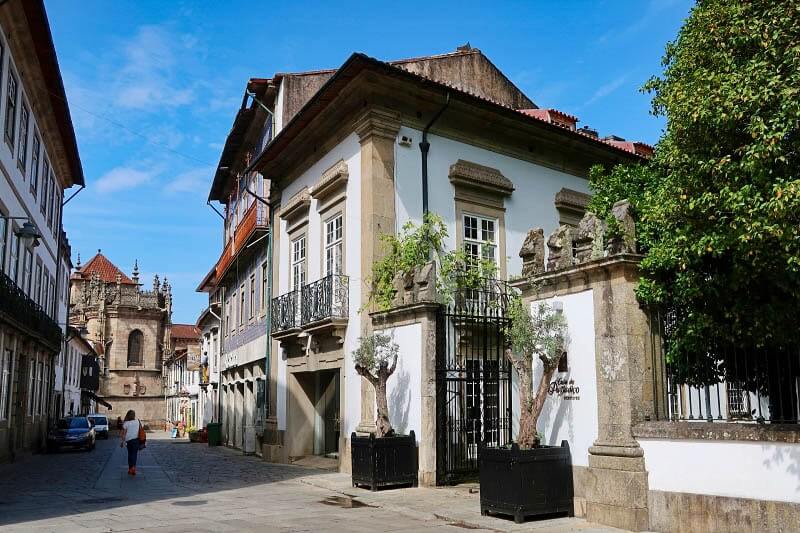
Recommended by Julie from Julie Dawn Fox in Portugal
The ancient city of Braga is both charming and fascinating, thanks to its Roman heritage and abundance of churches and flower-filled public spaces. However, many visitors never get to experience this as they head straight to Braga’s main draw, the UNESCO World Heritage sanctuary of Bom Jesus do Monte (Good Jesus of the Mount), just a few kilometers from the city center.
The sanctuary has been attracting pilgrims since the 14th century, although the main Neoclassical church building dates from the 18th century. Bom Jesus is most famous for its monumental Baroque staircase, decorated with painted tile panels, sculptures and fountains that allude to the five senses, the Passion of Christ and the Christian virtues of Faith, Hope, and Charity. Climbing up them is not for the fainthearted – pilgrims are encouraged to go up on their knees.
But the view from the top is remarkable.
For those with neither the will nor physical capacity to face the 600 steps, there is a delightful water-powered elevator that will take you to the top of the staircase. Or you can drive up the hill.
Aside from the views of the surrounding countryside and the city of Braga, the grounds around the sanctuary offer several pathways through the woods to secluded picnic tables and ornamental gardens and grottoes, making it a great spot for a family outing with a dose of culture.
Recommended: A culture-filled one day itinerary for Braga Portugal
15. Alto Douro Wine Region – An unmissable place to visit in Portugal

The Portuguese wine region of Douro Valley is nestled in the middle of lush green mountains and rolling hills around the River Douro. It is located pretty close to the cultural city of Porto. You can easily do a day trip from here. And a scenic train journey from Porto to Douro Valley starting at the pretty Sao Bento station is the perfect way to do it.
Alto Douro or Upper Douro Valley has long been home to traditional winemakers since time immemorial. Literally, as early as 2000 years ago. More recently, in the 18th century to be precise, their Port Wine became popular around the world. There has been no stopping ever since.
Douro Valley was inscribed on the UNESCO World Heritage list in 2001. For its longstanding heritage of traditional winemaking coupled with a beautiful landscape that has grown and evolved with the winemaking process. Douro Valley is so beautiful you cannot-not visit it when in Portugal.
16. The Historic Centre of Guimarães
Recommended by Joel from World Heritage Journey
The historic center of Guimarães is a fascinating place. Located in northern Portugal, about an hour’s drive north-east of Porto, Guimarães is central to Portugal’s history and national identity. It’s here that Portugal’s first king Afonso I was born, and near where he claimed victory in the Battle of São Mamede, ensuring Portugal’s independence in 1128. The city was also home to the development of the Portuguese language.
But Guimarães is much more than just another old European castle town – although the main castle here certainly is fantastic. It’s actually on the World Heritage List because it’s a living example of how cities develop and evolve over time. You can see evidence of the medieval history, with the gorgeous and well-preserved castle. But there’s also sparkling Renaissance heritage on show here, with the Palace of the Dukes of Bragança, along with the Old Town Hall and other buildings on Oliveira Square. You can really trace all eras of the city’s development which is just fantastic.
For me, after 500+ World Heritage sites, Guimarães still stands out as a highlight! If you’re at all interested in the history and heritage of Portugal, (or the entire Iberian Peninsula for that matter), Guimarães is definitely one for the bucket list!
17. The Archaeological Park of Foz Coa
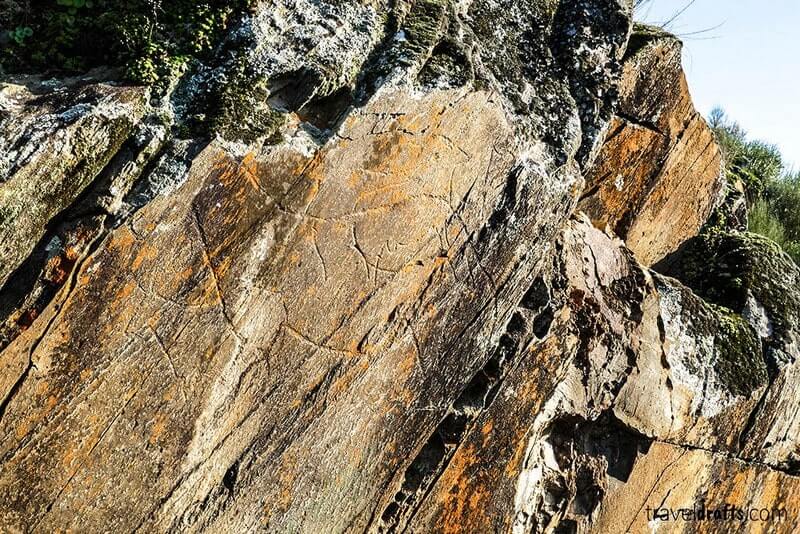
Recommended by Jorge & Claudia from Portugal Things
The Archaeological Park of Foz Coa is a Prehistoric Rock-Art site located in the Foz Coa municipality about 200 km from Porto. The rock engravings were discovered during the construction of a dam in the valley of the Côa River. They include thousands of engraved rock drawings of horses, bovines and other animals, human and abstract figures, dated from 22,000 to 10,000 years B.C.
In 1998 the Prehistoric Rock Art of the Côa Valley was classified as a UNESCO heritage site. It was the fastest classification process ever, due to the construction of the dam. Besides the historical importance of the site, the Coa valley is simply breathtaking. It’s like going to an open-air museum with the best view ever. There are organized tours from Porto to Foz Coa, but if you have a car you’ll be able to enjoy it even better. Note that you can’t really do this day trip using public transports, it’s too long and with very few options. This is a very remote area. You can even take this opportunity and also visit the Douro Valley, which is very close and on the way to the Foz Coa.
Visits to the park need to be scheduled with the guides, as you can’t access the gravures without an official guide. There are organized tours both in the morning and in the afternoon, but these are visits to different sites. You really should book your visit as soon as possible as they tend to sell out pretty fast.
That was an interesting round-up of the best places to visit in Portugal. Wasn’t it?
Portugal is full of history and culture. Visiting Portugal is every heritage lover’s dream. And these, in my opinion, and that of several other seasoned travelers, are some of the best places to visit in Portugal. Especially if you are a heritage lover.
Have you been to Portugal? Have you visited any of these historic sites? Which one was your favorite? Or did you something else? Do let us know in the comments below. If you have any questions about planning your Portugal itinerary, ask away. Or refer to our other travel guides that our readers find helpful.
More Portugal Resources
- Ultimate Itinerary for 10 days in Portugal
- Lisbon of the beaten path – 9 experiences to cherish
- 17 Best Things to do in Porto
- Things to do on a family holiday in Portugal
- How to spend a day in Coimbra
- How to visit the Roman ruins of Conimbriga near Coimbra
- 9 Delicious desserts you have to try in Portugal
Did you love our post? Pin it here!



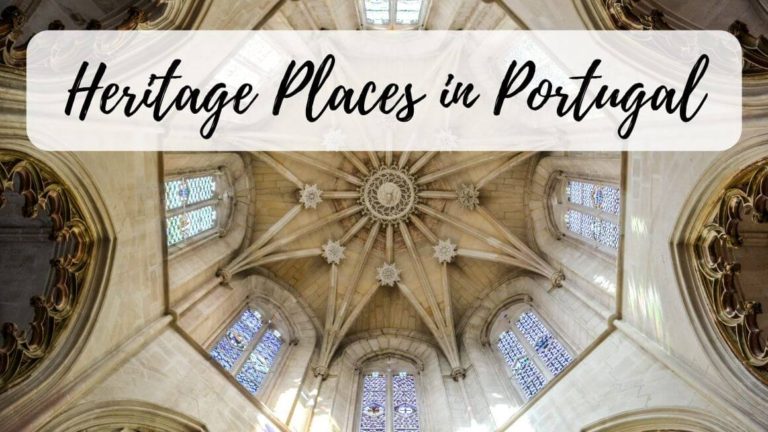

This is such a great guide! Exploring the history of a destination is one of my favorite things to do, so all of these places would be perfect for me. I would love to spend some time admiring the engraved drawings of the Archaeological Park of Foz Coa. Evora would also be at the top of my list. The smaller towns such as Obidos are very charming. This sunds like it would make the perfect road trip! SO many places to add to my bucket list!
Portugal is the perfect country for a heritage road trip. You got it so right.
I have only been to Lisbon once and it was a brief visit unfortunately. As a castle lover, I have to visit Sintra. The history looks amazing! I will be saving this guide to Portugal as there are so many stunning gems you listed. Thank your for such an informative piece. Also, I appreciate how you present the info as it makes creating a Portugal itinerary very easy.
Although I have been to Portugal once earlier it was restricted to Lisbon, Sintra, Albufeira, Faro, Olhao and Lagos. But through your post I discovered there is so much more. Motivates me to go back to focus on these small beautiful places.
I loved Portugal when I visited it is such a beautiful country though I certainly didn’t have chance to see everything on the list. I did manage to see Sintra, Belem, Coimbra which are all stunning places. There are a few on your list that I didn’t know about and some that are on my list for next time. I can’t wait to visit this beautiful country again.
Same here, Clare. Even I did not get to see everything on the list. That is why I had this team of heritage experts curate this list. So many on my Portugal bucket list for the next time.
Ok…Alto Duoro is at the top of my must visit list right now. I had no idea it even existed – it looks like a story book and what a rich history. I’ve only been to Lisbon, but I’m sincerely hoping to make it to Porto one day! I’ll be honest – I always just thought of Portugal as Lisbon, Porto, and that’s it. Your post makes me want to go back and discover so much more!
That’s what I thought too before I traveled to Portugal. But there’s so much more to do there. All that in a tiny country by the Atlantic. Portugal surprised me pleasantly.
I love Portugal! I wish I had scheduled more time and seen more. I only spent one day in Sinatra and that was not enough. I think I would have loved wandering through Elvas and Obisos. I also missed the Douro Wine Region and regret it, I really liked Port and this would have been a great memory.
Maybe next time. You have a whole list now.
A post after my own heart! I love Portugal and have been back 3 times since. I’ve seen many of these places you mentioned on the list. But, I’d be most keen to visit Elvas and Coinmriga. The Roman ruins are so prevalent around Europe, and I’m fascinated every time I discover another location.
Same here, Lisa. They are everywhere in Europe. Yet, each roman ruin is unique in its own way.
I was only a few days in Lisbon, but I would like to see the whole of Portugal. That is why I like your guide, and I will gladly use it when I plan my trip. You showed the most beautiful places in Portugal excitingly, detailed information, and the pictures are fabulous. Sintra, Belem, Elvas, Obidos, Porto, and more, I would love to visit all of them. I had no idea that Coimbra is home to one of the oldest universities in Europe, founded in 1290. Want to visit it, too.
Hi Agnes, I am glad you liked our guide. The university of Coimbra is pretty old and a unesco heritage site. Yet, it is lesser known than many other heritage sites in Portugal. I am sure you will have a great time visiting there.
Portugal is very beautiful with many heritage architectures and culture which makes it a beautiful place to visit. I have It has always been on wish list and even many places of Portugal mentioned in the above list. I want to visit this place for these historic architecture and unique culture. A perfect trip guide for culture lovers.
You are right Yukti. Such a beautiful place for heritage lovers.
I was in the other side of Portugal, Porto and its surrounding. One common thing I notice from your pictures is the mosaic. There are many mosaic sites in this country. Some patterns are really beautiful
Yeah, Portugal is a haven for mosaic and tile lovers. So many different patterns and colors.